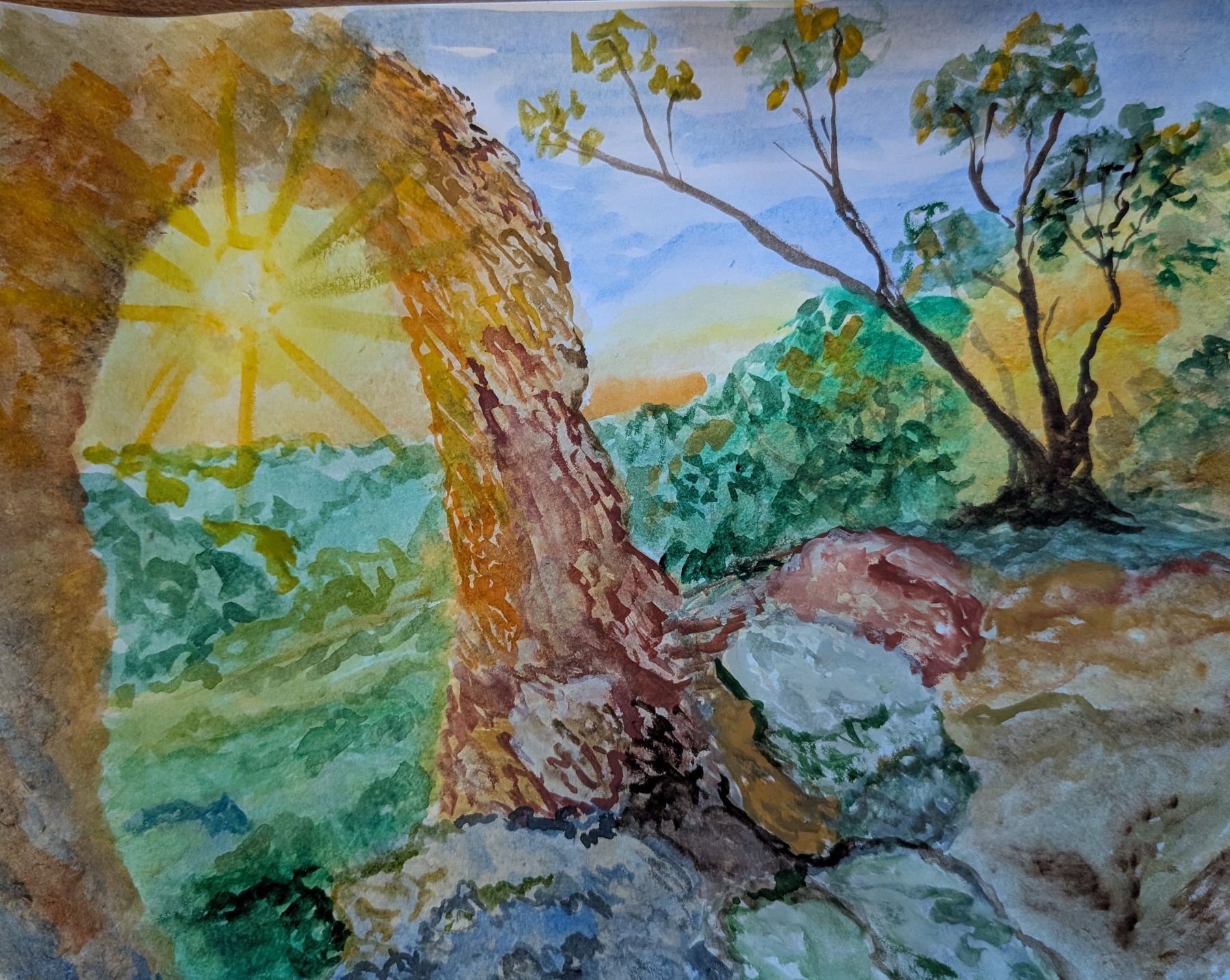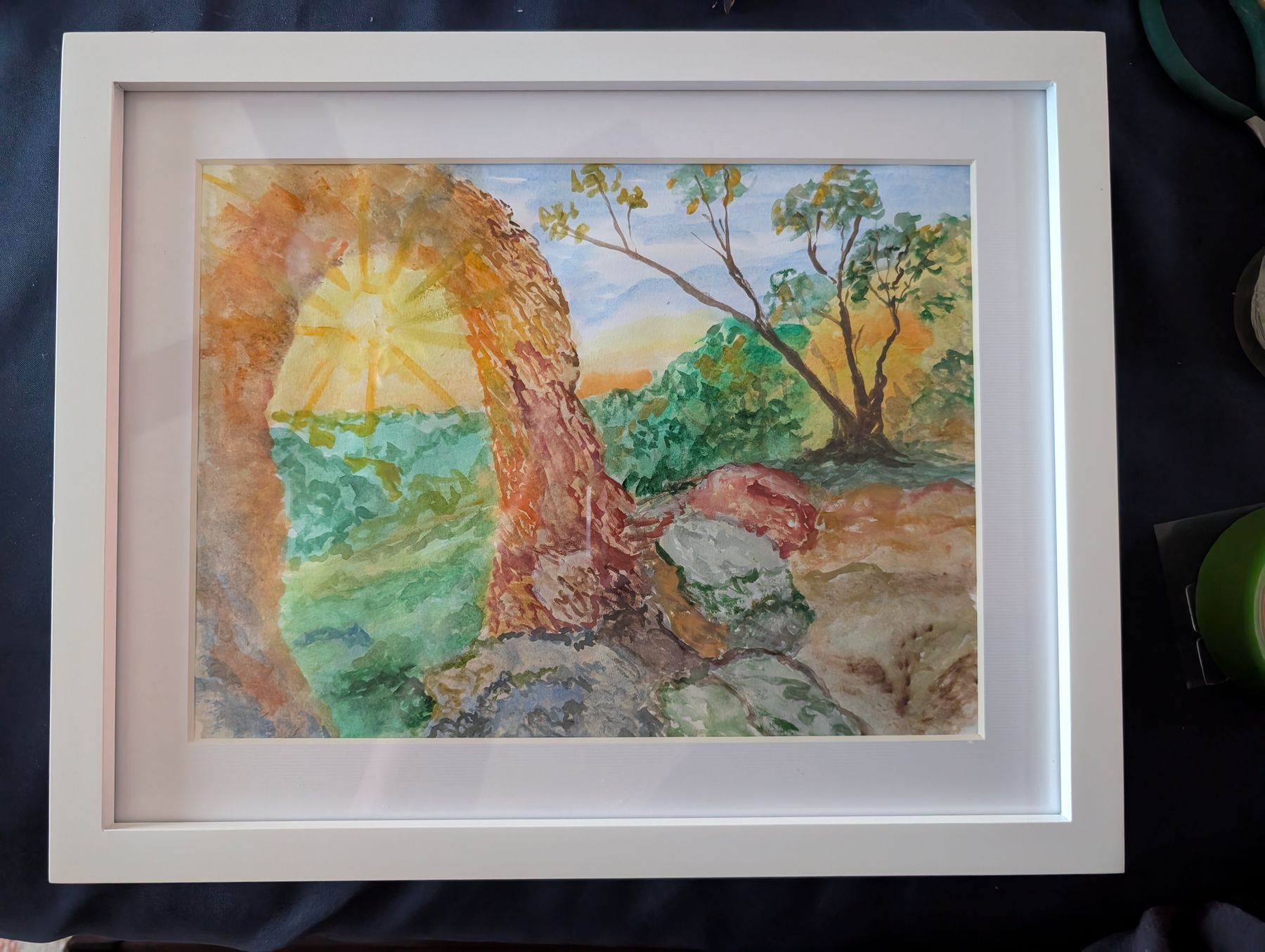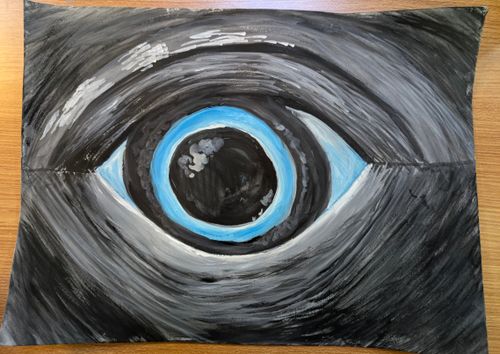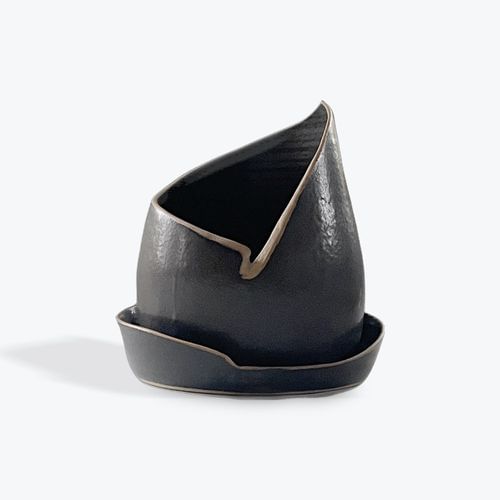

Light Through the Texas Canyons Artrageous Art Hub
On Exhibition at the Artrageous Art Hub in downtown Sherman. Must be purchased through the Hub while on Exhibition.
Light Through the Texas Canyons is a 9 by 12-inch watercolor painting on stipple texture paper that captures a quiet moment within the rugged landscape of Caprock Canyons State Park. This piece focuses on the interplay of natural light and textured forms, presenting a scene where a radiant sun near the left edge casts warm rays across the composition. The foreground features a prominently textured tree trunk, with rough bark rendered in detailed strokes that suggest both age and resilience. Surrounding the tree are rocks and patches of greenery, painted with nuanced washes of green, brown, and gray that convey the diverse terrain beneath the expansive sky.
In the distance, a dense green forest extends toward a soft blue sky, tinged with gentle hints of orange that frame the time of day—either early morning or late afternoon light. On the right side, a slender tree with sparse yellow leaves adds balance and a sense of calm, complementing the dense textures nearby while embracing the quietude of the setting. The stipple texture of the watercolor paper accentuates the tactile quality of the surfaces, enhancing the naturalistic details of bark, stone, and foliage.
This work is part of a new series exploring Texas landmarks through compact landscapes that focus on atmospheric light and geological presence. Caprock Canyons, located in the Texas Panhandle near Quitaque, provided both the visual and historical foundation for this painting. The canyon’s terrain is shaped by millions of years of erosion along the Caprock Escarpment, exposing layers of red, orange, and white sedimentary rock—known locally as red beds. These formations reflect nearly 280 million years of geological history and create a striking backdrop to the park’s natural environment.
Caprock Canyons holds a special place in Texas history, serving as home to the official Texas State Bison Herd. Originating from efforts by Charles and Mary Ann Goodnight in 1878 to preserve bison from extinction, this herd remains genetically distinct and vital to maintaining the local prairie ecosystem. This relationship between the land, its geological features, and the wildlife it supports framed my approach to Light Through the Texas Canyons. The painting aims to honor this interconnectedness by highlighting the textures and colors that define the place’s character.
Creating this piece involved working in a loose yet deliberate watercolor style, allowing fluid washes to capture the light and atmosphere while employing more precise brushwork to define the intricate textures of bark and stone. The stippled texture of the paper invites a tactile engagement both visually and physically, reinforcing the sense of natural surfaces and rugged terrain. Choosing a smaller scale let me concentrate on thoughtful details and compositional balance without diluting the scene’s presence.
Light Through the Texas Canyons represents more than just a landscape; it is an exploration of light as a shaping force and a nod to the deep history embedded in the Texas Panhandle’s natural environment. Through this painting, I continue to investigate how distinct regional landmarks can be reinterpreted on a modest scale while retaining their expansive significance. It is a study in how light reveals texture and form, offering moments of quiet reflection within a vast and enduring landscape.











